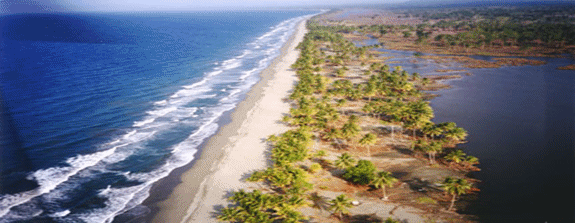
source: http://www.geophys.washington.edu/tsunami

source: http://www.geophys.washington.edu/tsunami
(Click here to a MSWord version of this page.)
Wow, there must be thousands of tourists in town! The Olympics have attracted people from all over the world, and as you're watching the news on television, you hear the sound of the neighbour's kids playing in their back yard pool. The sound of splashing water causes a cold shiver to run down your spine as you think 'the earthquake could trigger a TSUNAMI!'
What the heck is a tsunami?
A tsunami a powerful ocean wave which can be created by sudden movements in
the sea floor, landslides, or volcanic activity. In the deep ocean their height
may only be a few inches, but as they encounter shallow water their heights
increase dramatically and they often flood low-lying coastal
areas.
Tsunami is a Japanese word with the English translation, "harbour
wave." Pronounced "soo-nami", it is represented by two characters, the top
character, "tsu," means harbour, while the bottom character, "nami," means
"wave." Sometimes tsunamis are called "tidal waves" by the general public.
Earthquakes can cause tsunamis?
Yes, undersea earthquakes can trigger huge waves, which can travel as quickly as a jet airliner. As a seismologist, you know that tsunamis can also be caused by coastal land earthquakes. If there is a large earthquake near British Columbia, a tsunami could be formed!
How long does it take a tsunami to reach land?
Once generated, a tsunami wave in the open ocean can travel with speeds greater than 800 kilometres an hour. These waves can travel across the Pacific Ocean in less than one day. Locally generated tsunamis can reach coastlines in just minutes.
When and where was the largest recorded tsunami near British Columbia?
After checking your data records, you discover that the largest tsunami wave recorded in BC was a 30m (98 feet) wave on Vancouver Island! It was generated by an Alaskan earthquake in 1946. If another powerful earthquake occurs near BC we can expect tsunamis created directly by the earthquake, and indirectly by landslides that are created by the same earthquake.

How fast does a tsunami travel?
Every good seismologist knows that the approximate speed of a tsunami, c,
is
given by the equation: c =![]() , where
, where
|
g = 9.8 m/s2 |
source of equations and constants: http://www.pmel.noaa.gov/tsunami/Faq/ |
| If the average depth of the ocean is approximately 4500m, what is the average speed of a tsunami? Convert your answer to km/h. |
That seems incredibly fast!
Actually, the speed of a tsunami can vary greatly depending on the depth of the ocean.
Using your wave-speed equation given, complete the following table.
|
d (m) |
c (m/s) |
c (km/h) |
|
1000 |
||
|
222 |
||
|
873 |
What does this information tell us?
Basically, it tells us that tsunamis travel faster in deep waters, and slower in shallow waters. As the wave approaches land its height increases drastically. The Alaskan earthquake in 1946 created a massive tsunami which hit Vancouver Island. Imagine standing on the beach and seeing a 30m (96 ft) wave coming towards you!
Let's find out how to construct buildings that are more sturdy in an earthquake. On to Quake-Proofing
| See solutions to the questions. |
Back to Earthquake Math Trail Home |